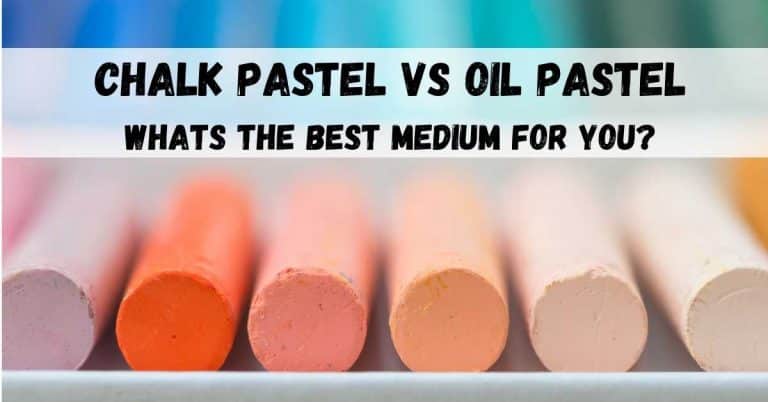Last Updated on June 23, 2023 by Dee
When it comes to choosing the suitable medium for your artwork, there are a lot of different options to choose from. Two of the most popular mediums are chalk pastel and oil pastel. So, which one is right for you?
In this blog post, we will discuss the differences between chalk pastel vs oil pastel and their pros and cons. We will also help you decide which medium is best suited for your individual artistic style!
For more fine art tutorials and creative inspiration sign up for my newsletter 🙂
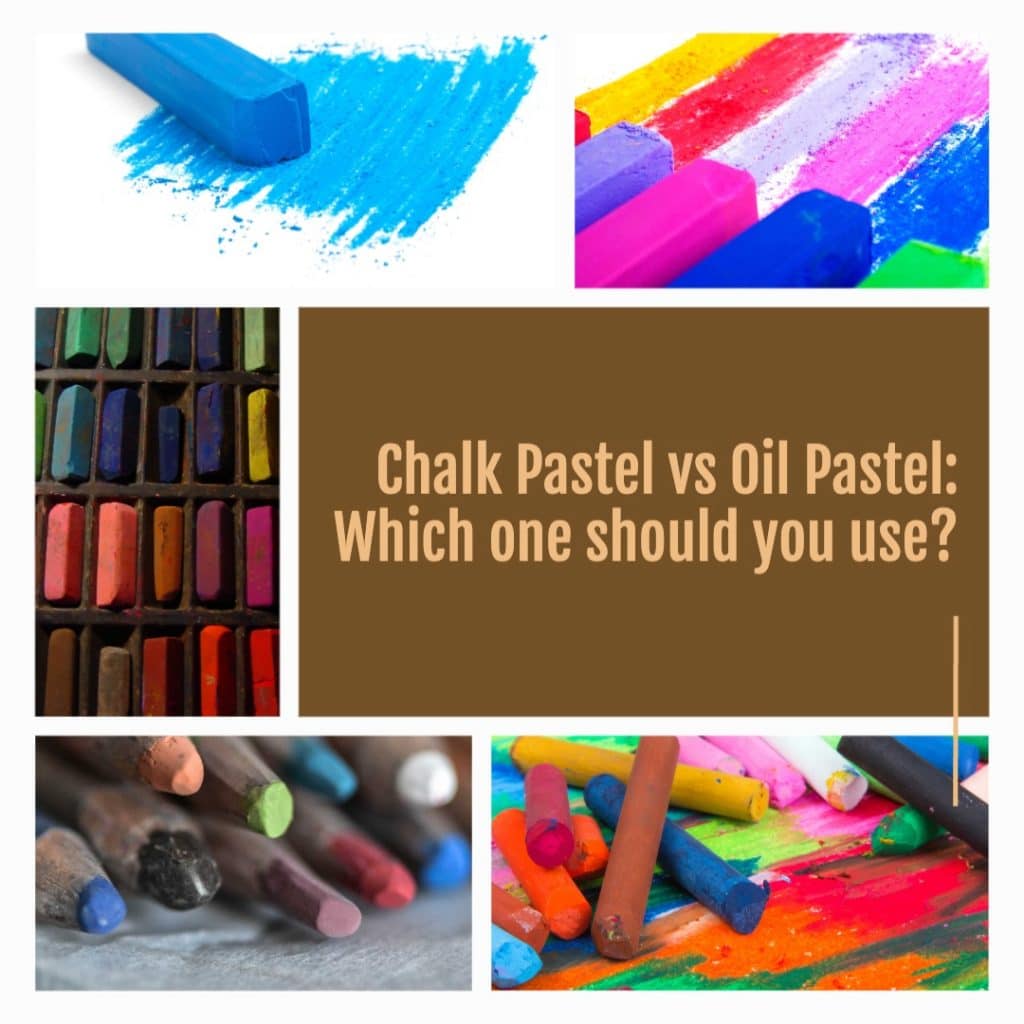
Quick Overview: Chalk Pastel vs. Oil Pastel
**This page may contain affiliate links to products I have used or recommend. If you purchase something from this page, I may receive a small percentage of the sale at no extra cost to you.**
Chalk pastels are made with a pigment and a binder, such as gum arabic or kaolin clay. This gives them a soft, crumbly texture that is perfect for creating smooth, even layers of color.
On the other hand, soft or oil pastels contain a wax binder instead of gum or clay. This gives them a slightly harder texture and can be used for more detailed work.
In terms of color, chalk pastels tend to be more opaque, while oil pastels are more translucent.
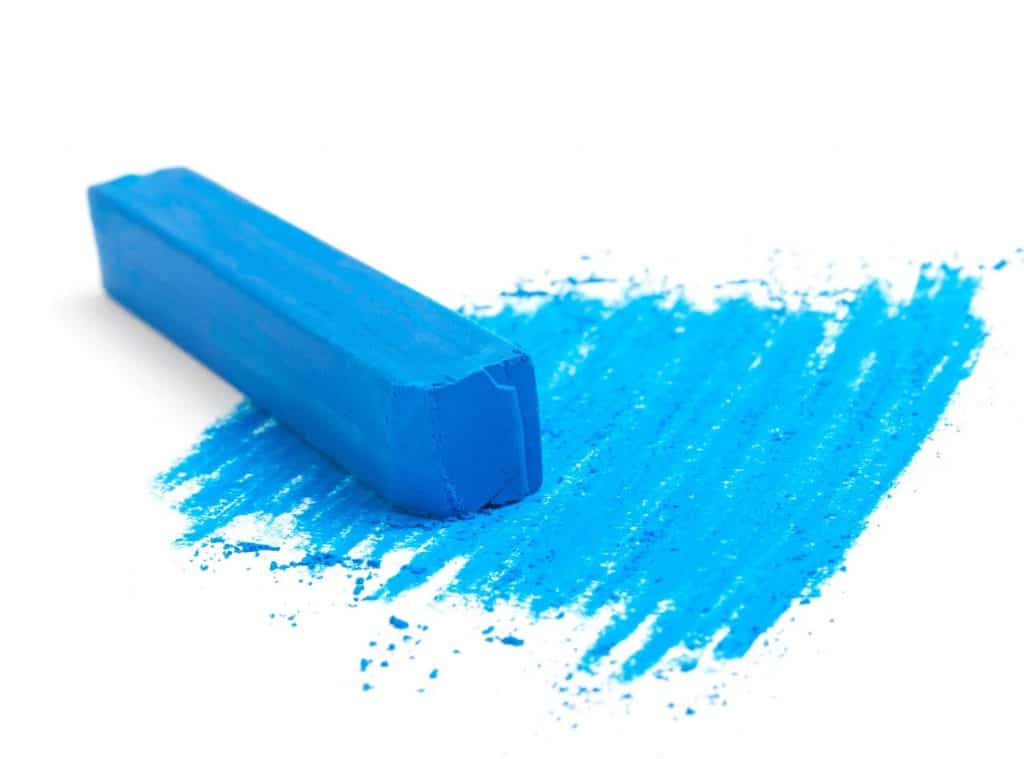
A Brief Overview of Pastels
Pastels are a type of art medium made from ground pigments mixed with a binder. Unlike other forms of painting, pastels don’t require a liquid medium, so the pigments remain dry and workable for an extended period.
Pastels come in various forms, including sticks, crayons, and pencils. And while they can be used on various surfaces, paper is the most commonly used support for pastel paintings.
Artists have used pastels for centuries, but it wasn’t until the 18th century that the medium gained widespread popularity.
French artist Jean-Baptiste Perronneau is credited with popularizing pastel portraiture, and his work helped spark a renewed interest in the genre.
Pastels remain popular among artists today, thanks to their bright colors and versatility. Whether used for landscapes or portraits, pastels offer a unique way to create beautiful works of art.
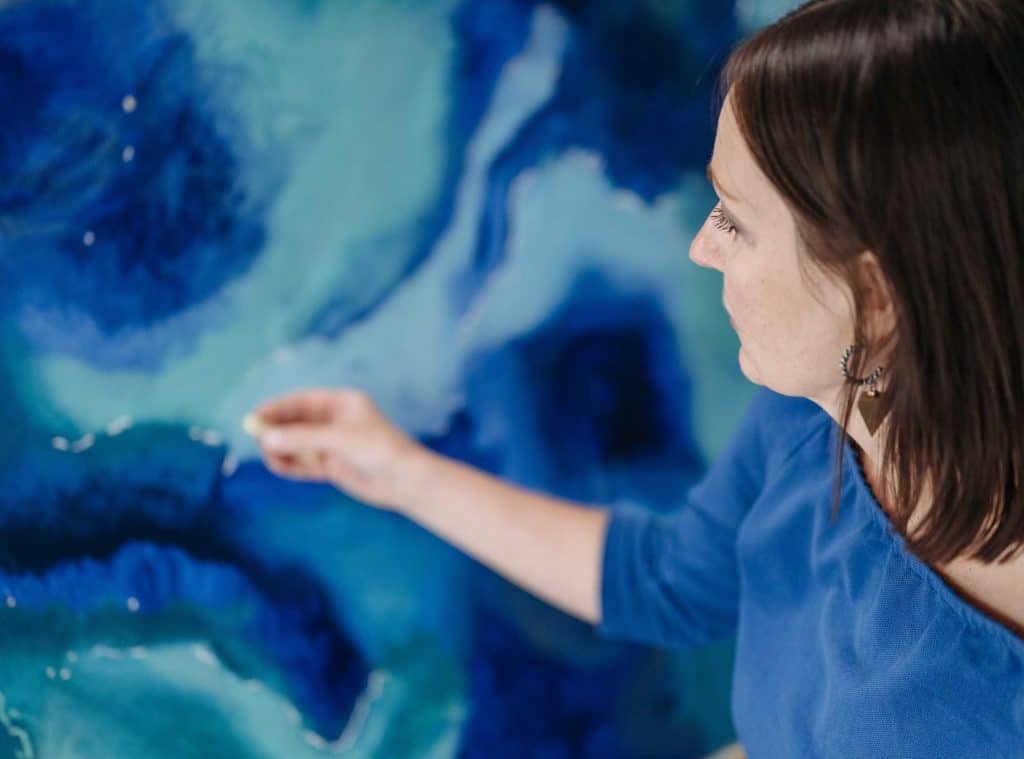
Different Pastel Mediums
Artists have a variety of pastels to choose from when creating their artwork. The most common pastels are oil, chalk, and soft pastel.
Oil pastels are made with a binder of petroleum jelly and pigment. They have a strong color and can be used on various surfaces.
Chalk pastels are made with calcium sulfate and pigment and tend to be harder than formal soft pastels. They have a softer color and are ideal for creating delicate blends.
Soft pastel is made with a binder of gum tragacanth or kaolin clay and pigment. They have a high pigment concentration, making them ideal for creating bold colors.
Soft Pastel
Soft pastel is a type of art supply made from pigment and binder that comes as a stick. Unlike other types of pastels, soft pastel does not contain any hardening agents.
This makes them ideal for blending, layering, and creating a wide range of textures. The high amount of pigment also gives soft pastels their rich, intense color.
While soft pastels can be used on various surfaces, they are most commonly used on paper. The absorbent nature of paper helps keep the pigments in place, allowing artists to achieve precise results.
Soft pastel is essential for any artist who wants to explore this versatile medium’s full range of possibilities.
Why do I use soft pastels?
I tend to use soft pastels because I like how they feel on paper. I find it easy to get an even covering of pigment, and I can achieve a wide range of tones and textures.
I also find that soft pastels are very forgiving – if I make a mistake, I can rub the pigment off the paper and start again.
And because they’re so easy to blend, soft pastels are perfect for creating gradients and subtle shading effects.
In short, I use soft pastels because I enjoy how they look and feel, and they give me much control over the final result 🙂
What are Pan Pastels?
Pan pastels are a type of soft pastel, which are colored sticks of pigment held together with a binder.
They were first invented in the early 20th century and have since become a popular medium for artists of all skill levels.
Pan pastels are similar to traditional soft pastels, but they have a number of distinct advantages. First, pan pastels are much more densely packed with pigment, which allows for more vibrant colors. Second, they can be used dry or wet, giving artists greater control over the finished product.
Finally, pan pastels are less messy than traditional soft pastels, making them ideal for use in a studio setting.
Whether you’re a professional artist or a casual hobbyist, pan-pastels are an excellent way to add color and life to your work.
Oil Pastels
Oil pastels are a type of drawing stick composed of a pigment-based oil rattan and a wax binder.
Unlike traditional wax crayons, oil pastels are much softer and more malleable, making them ideal for blending and creating interesting textures.
Oil pastels also tend to be more vibrant and saturated than other types of crayons, which makes them perfect for creating bold works of art.
Because they are less likely to break than softer pastels, oil pastel drawing is a popular choice for artists and students.
Soft or Oil pastels are a great option if you’re looking to add a pop of color to your artwork or want to experiment with a new medium.
Hard Pastels
Hard pastels are a type of dry pastel that is made from a combination of pigment, water, and chalk.
Unlike soft pastels, which are made from a combination of pigment and oil, hard pastels have a harder consistency and can create clean, crisp lines.
Although they might not blend as well as soft pastels, hard pastels offer the opportunity to create beautiful bold strokes on the page.
In addition, hard pastels are less likely to smudge or transfer to other surfaces, making them ideal for use in drawing and painting.
Hard pastels are an excellent choice if you’re looking to add some drama to your artwork or simply want a more precise tool for your drawing.
Pastel Pencils
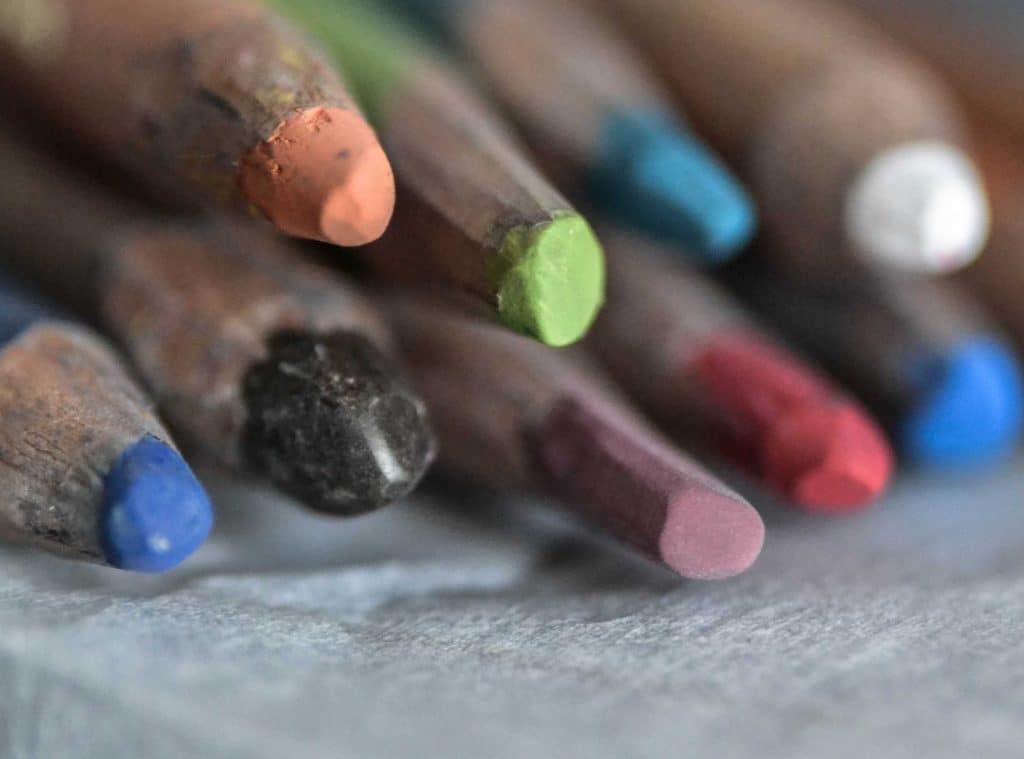
Pastel pencils are a type of art supply that is used for drawing and coloring. They are made from a soft, wax-like material that is similar to chalk.
The pencils come in a wide range of colors, from bright primaries to subtle earth tones. Pastel pencils can be used on their own or blended with other mediums, such as watercolors or oil paints.
When used alone, pastel pencils create soft, highly pigmented lines. They can also be used to add color and shading to larger areas.
Pastel pencils are a versatile medium used for detailed drawings and broad strokes of color.
Check out my article on the Best Pastel Pencils for 2022 🙂
Cost Comparison Of Soft Pastels vs. Oil Pastels
When it comes to professional quality pastels, the price difference between soft and oil pastels is minimal.
In fact, high-end brands like Sennelier and Rembrandt offer both types of pastels at similar price points.
However, when it comes to lower-priced options, oil pastels tend to be slightly more expensive than soft pastels.
For example, a set of 24 Crayola oil pastels costs around $10, while a set of 16 Crayola soft pastels costs less than $8. While the price difference is not significant, it is worth considering if you are on a tight budget.
Ultimately, the type of pastel you choose should be based on your personal preferences and the type of artwork you plan to create.
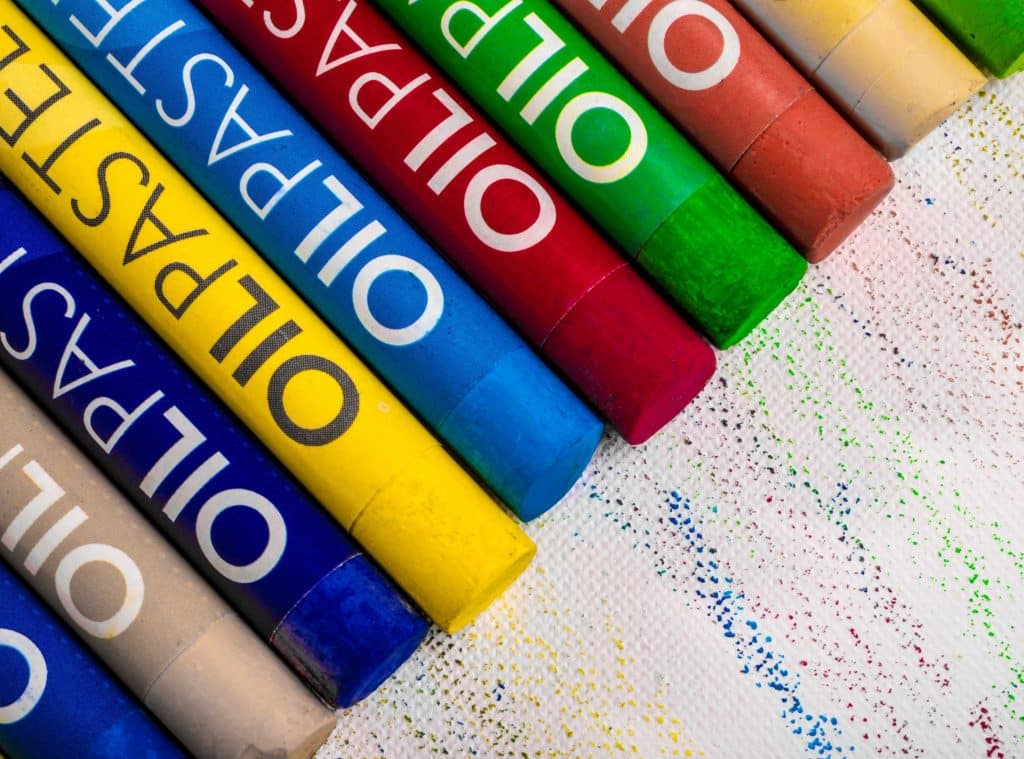
Pastel Colors
One of the primary differences between oil pastels and chalk pastels is the range of pastel colors available.
Chalk pastels are generally made with more muted colors, such as earth tones, while oil pastels can be found in a much wider variety of hues, including bright shades like red and purple.
This difference is due to the pigments used to make each type of pastel.
Chalk pastels are usually made with calcium sulfate, which produces more subtle colors, while oil pastels are made with pigment-based dyes, resulting in a greater range of colors.
As a result, artists who want to create bright, bold artworks often prefer oil pastels, while those who prefer more subdued color palettes tend to use chalk pastels.
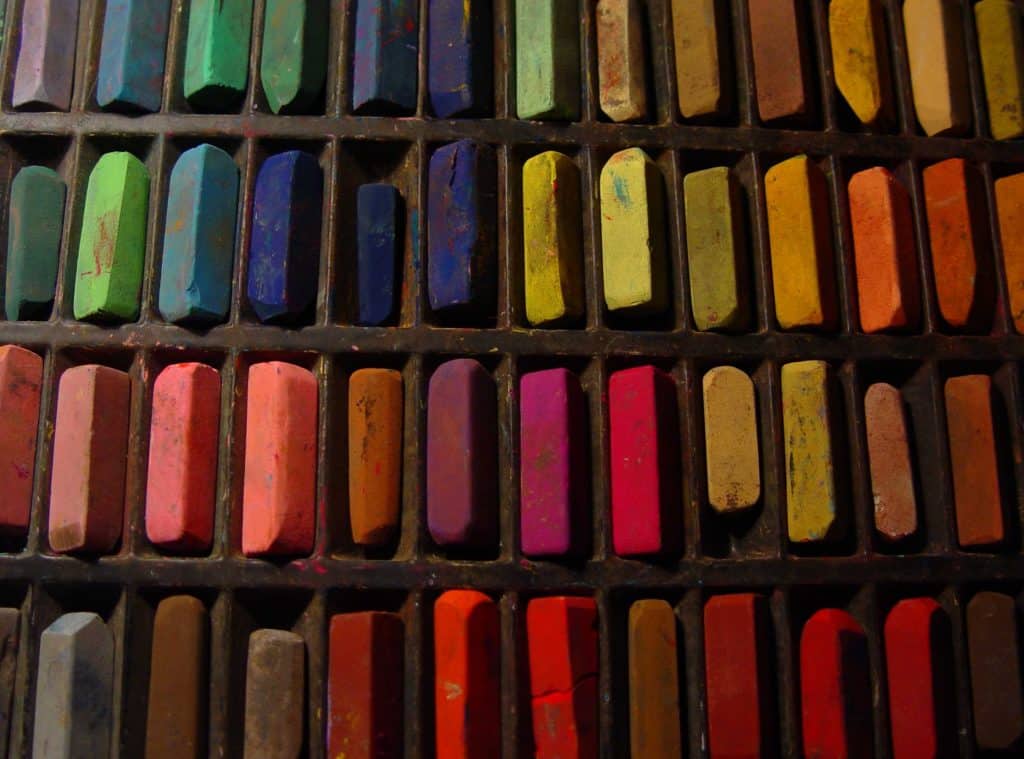
Quality
When it comes to choosing a pastel, oil, or chalk, there are a few things to consider. The pigments’ quality, the pastel’s hardness, and the price are all important factors.
Oil pastels have high-quality pigments and soft, creamy consistency. They’re easy to blend and produce rich, vibrant colors. However, they can be expensive and require special paper or canvas to prevent smudging.
Chalk pastels are less expensive and can be used on a variety of surfaces, but they’re not as easy to blend, and the colors can be more muted. The pigments in chalk pastels are also not as high quality, so they may not last as long.
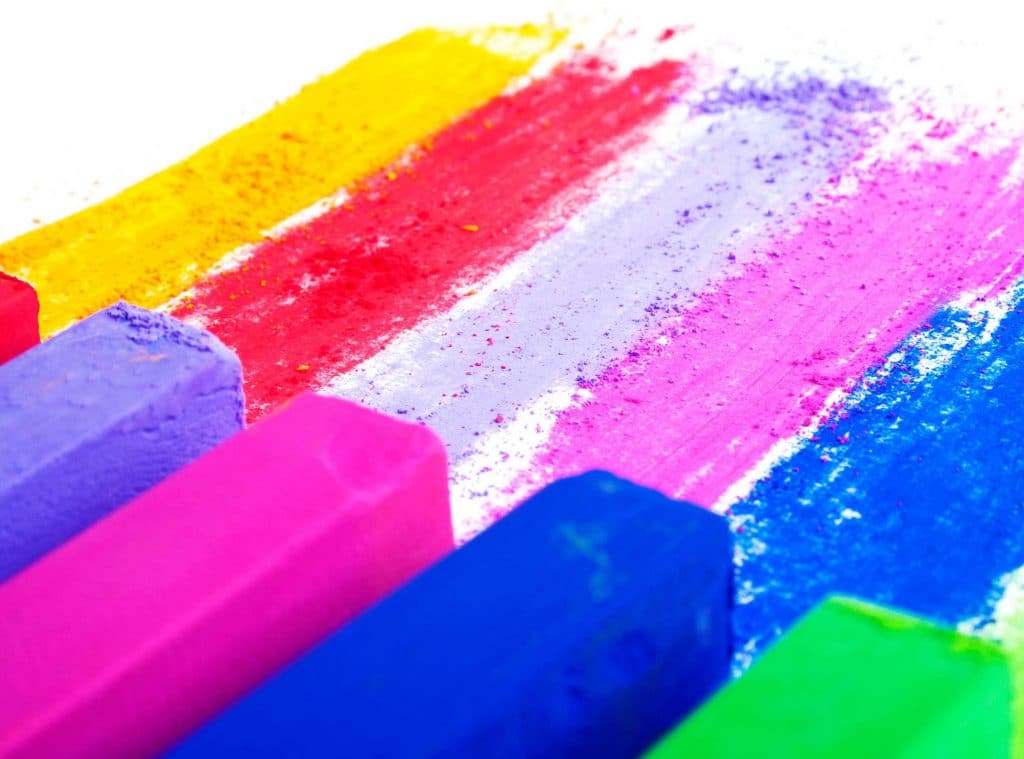
Which pastels should you buy?
When it comes to choosing between oil pastels and chalk pastels, there are a few things to consider.
Oil pastels are much richer and more vibrant in color, but they can also be more difficult to control.
Chalk pastels are less intense in color but easier to blend and layer.
Ultimately, the decision between oil and chalk pastels comes down to personal preference.
If you’re just starting out, it’s worthwhile to experiment with both types of pastels to see which you prefer.
Which pastels are best for beginners?
For a beginner, choosing a set of pastels that includes a range of colors is advisable. With time and practice, you will better understand which colors you use most often and can purchase individual pastels.
Both chalk pastels and oil pastels can be successfully used by beginners.
My Recommendations on Pastel Brands
After many years of teaching art, the Pastel brands below are the ones I would recommend if you want good coverage and easy blending.
Oil Pastel Brands:
Paul Rubens Oil Pastels
Pentel Arts Oil Pastels
Chalk Pastel Brands:
Sargent Art Square Chalk Pastels
Dry Pastel Chalk Long Goldfaber
Soft Pastel Brands:
Rembrandt Soft Pastel Master
Savoir-Faire Sennelier Soft Pastels
Art Supplies required for using chalk pastels or oil pastels:
Using chalk or oil pastel can be a fun and easy way to add color to your sketches or drawings.
Before you start, however, you will need a few supplies.
First, you will need some paper. Pastel paper, Watercolor paper, mixed media paper, or sugar paper both work well for this purpose.
Next, you will need some blending stumps or tortillons in order to blend the colors smoothly.
Finally, you will need a sharpener so that you can keep your pencils nice and sharp.
With these supplies in hand, you’re ready to start exploring the world of chalk and oil pastel!
Soft Pastel Tips
Soft pastels are a type of artist’s chalk that comes in a wide variety of colors. They are perfect for creating beautiful and vibrant artwork.
Here are some tips for using soft pastels:
- It is best to use a light color such as white or cream to get started. This will help you to build up layers of color and create a smooth finish.
- When layering colors, try to use light colors over dark colors. This will prevent the dark colors from overpowering the lighter colors.
- To create a range of shading and tones, use a variety of pressure when applying the pastels. For example, light pressure will create a light shade, while more pressure will create a darker shade.
- If you make a mistake, don’t worry! Soft pastels can easily be removed with a soft cloth or eraser.
- Remember to fix your final artwork using pastel fixative.
With these tips in mind, you’ll be able to create stunning works of art with soft pastels.
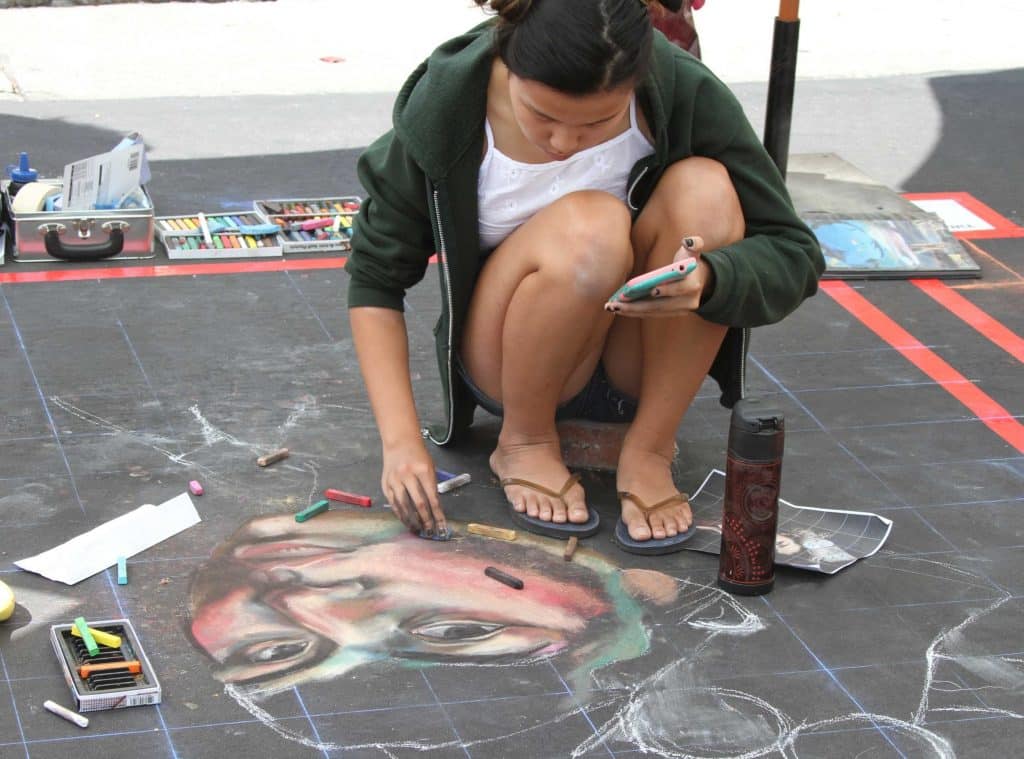
Safety
It is always important to work in a well-ventilated area when using either type of pastel, as the inhalation of dust can be harmful.
Oil pastels may contain harmful chemicals, so it is important to read the labels carefully and use them in a well-ventilated area. Also, both types of pastels should not be ingested – so take care when using them with children.
Overall, both types of pastels are safe to use if proper precautions are taken.
Techniques For Soft Pastels And Oil Pastels Differ Greatly
Soft pastels are made from a pigment bound together with a binder, resulting in a soft, fragile stick. They are very easy to blend, making them ideal for creating smooth, graded effects.
On the other hand, oil pastels consist of a pigment held together with an oil-based binder. They have a velvety smooth consistency that makes them easy to apply to the surface, but they can be more difficult to control than soft pastels. You can heat oil pastel to create a more oil pastel painting effect.
As a result, oil pastels are often used for more impressionistic styles of painting.
Creating Unusual Effects with Soft Pastel Techniques
When used correctly, soft pastels can produce luminous colors that seem to glow from within.
One way to create this effect is by using several layers of pastel, allowing each layer to dry before adding the next. It is possible to create a rich, deep hue with real depth and vibrancy by building up the color in this way.
Another technique is to add white pastel over dark colors, using a light touch to create highlights and shadows. This can produce some truly stunning results and is an excellent way to add interest and dimension to any painting.
Frequently Asked Questions about Chalk Pastel vs. Oil Pastel…
Which is better oil pastels or soft pastels?
Soft pastels would be the better choice if you want something easy to blend and produce smooth gradations of color. However, oil pastels would be a better option if you are looking for something easy to apply and can create more impressionistic effects.
Are soft pastels chalk or oil?
Soft pastels are chalk that has been bound together with a binder to create a soft, fragile stick.
What are soft pastels good for?
Soft pastels are perfect for creating beautiful and vibrant artwork. They can be used to create a range of shading and tones and can easily be blended to create smooth gradations of color.
Can oil pastels be used with chalk pastels?
Yes, oil pastels can be used with chalk pastels. However, it is important to note that chalk pastels may not adhere well to surfaces that have been treated with oil pastels. For best results, chalk pastels should be used on a clean, dry surface.
How do you use oil and chalk pastels?
Oil and chalk pastels can be used in a variety of ways. They can be blended together to create smooth gradations of color or used separately to create more impressionistic effects. Oil pastels can also be used to add highlights and shadows to chalk pastel paintings.
Why do artists use chalk pastels?
Chalk pastels are a very versatile medium that can be used to create a wide range of effects. They are perfect for creating both realistic and impressionistic paintings. Chalk pastels are also very easy to blend, making them ideal for creating smooth gradations of color.
Are chalk and soft pastels the same?
No, chalk and soft pastels are not the same. Chalk pastels are made from chalk that has been bound together with a binder to create a soft, fragile stick. Soft pastels are made from a pigment bound together with a binder.
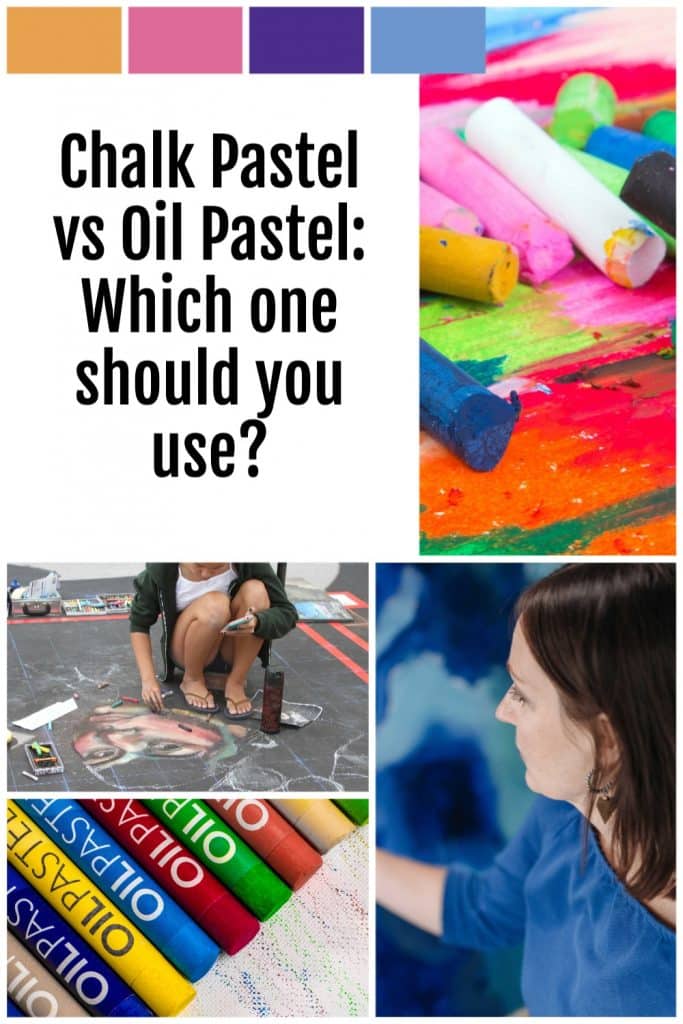
Are soft pastels oil or chalk?
Soft pastels are chalk that has been bound together with a binder to create a soft, fragile stick.
What types of pastels are good for beginners?
For beginners, both oil pastels and chalk pastels are good options.
Do soft pastels dry?
Soft pastels are already dry and do not need to be dried.
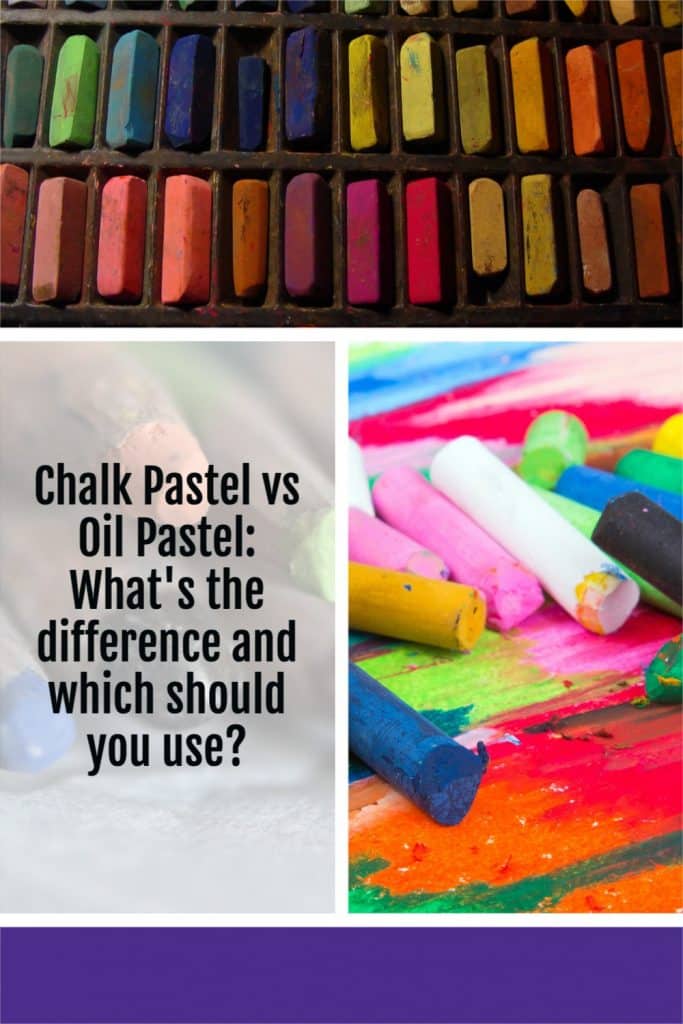
Conclusion
Chalk Pastel vs. Oil Pastel: So, which medium is best for you? It depends on your individual preferences and the type of effects you want to create. Soft pastels would be the better choice if you want something easy to blend and produce smooth gradations of color.
However, oil pastels would be a better option if you are looking for something easy to apply and can create more impressionistic effects. Whichever medium you choose, be sure to experiment and have fun!
Happy painting! 🙂
Other articles you may enjoy…
Looking For a Mixed Media Sketchbook? 16 Best Mixed Media Sketchbooks for Wet & Dry Media
The 17 Best Art Journal Supplies | Exciting Essentials for Creative Art Journaling
The 22 Best Beginners Art Supplies | Everything You’ll Need To Get Started Making Art
10 Best Artists Light Boxes: Why You Need One, and How to Choose the Right One For Your Needs
